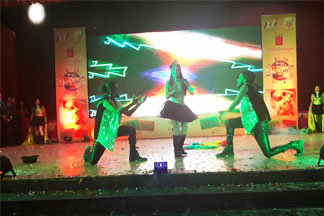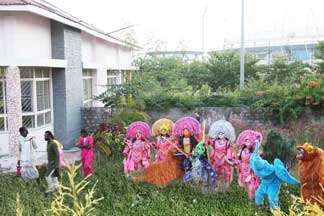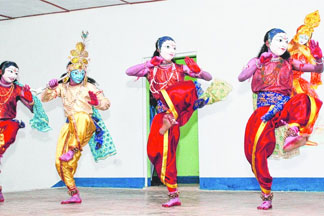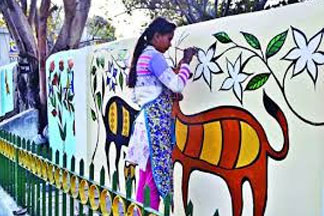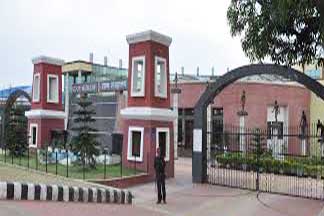Soriya Pahadiya
Introduction
Sauria Paharia is a primitive tribe of Jharkhand, which mainly resides in the Senthal Pargana region of Sahebganj, Pakurd, Godda, Dumka and Jamtara districts. Apart from this, some populations of this tribe are Ranchi, P. In Singhbhum and Dhanbad districts also it is found. The northern part of Damin-e-Koh (Santhan) of Santhal Pargana, whose overarching violence is covered with the lap of the palace of Rajmahal, is the main focus of this tribe. The Soria Paharia tribe residing in the lap of the Rajmahal hills is considered as Adiniwasi of this area. In the time of Chandragupta Maurya (302 B.C.), during his Bharat Barman, during the Bharat Bharman, he has mentioned the wild primitive species living in the suburbs of Rajmahal hills as Mali (Manav) or Sauri. Who now call themselves Maler or Soria Paharia. The stanza of this tribe is nata, nak wide, kapal dhdaya, color is light gray and hair is girthful and wavy. This tribe preserves protostroloid species.
Sauria Paharia Tribe Malto speaks the speech, which relates to the Dravidian language group. Maloto Uraon tribe gets very much from queue queue. Historians and of the opinion that the Sauria mountain range is a branch of Uraon tribe of Chotanagpur. According to Sarat Chandra Rai, these people came to live in Ligh Krao Sudanagar (Aara) and Vayyagaranagar (Buxar), and the Rohtas Garh, emptied by the Munda tribe while doing the same, according to the flow of river crossing Narmada river crossing the Vidyalal mountain range from India. Spread to According to the route of one of its branches (Uraon) Mundov, go to Chotanagpur, while the second branch (Sauria Paharia) followed the downstream flow of the Ganges and stayed between the palaces of the palace.
Sauria Paharia remained separate from its neighbors for many centuries. Until the arrival of the British, due to geographical separation, Sauria Paharia could maintain its independence. Residents of the Rajmahal hills never live under the control of the Mughals. It is believed that due to being a mountainous hill, Mughal administrators could never enter this wild area. In 1742 AD Marathas also attacked the palace area.
1779 AD When Cleveland became a collector of Bhagalpur district, this land was subdued by the British empire on the basis of progressive sympathy and sympathy.
Most of the villages of the Sauria Paharia tribe settle on the peaks of the wavy hills and on the hill slopes filled with forest. Their settlements are very less in the plain terrain of the valley. This tribe lives in small tiny rectangular huts made of bass, pomegranate and soil, in which the hair of the corn is often hung, so that due to heat the insects can not be found in them. Occasionally corn hair is also placed in the open courtyard outside the house, in a specially constructed enclosure enclosure.
Social Life
The Sauria Paharia tribe is an inter-caste tribe, among which there is a lack of social organization like the tribe. The family of this tribe is patriarchal, patriarchal and patriarchal. Among them is the plurality of the family of the single and the joint family is rarely seen. After marriage, people often settle their own house.
Marriage :
Sauria Paharia is not a tribe between the tribe, but marriage is not edited with close relatives. There is no marriage between cousins, fufres or brothers and sisters. It is not considered bad for them to get married in this village.
Education
Between the Sauria Paharia tribe, the young house called 'Kodbah Haaat' has been working as a traditional formal education center, whose youth - contributed socially, culturally, religious and economic education to women, contributed significantly towards their creation. Is there. The identity of this tribe is in the form of a fighting clan, which has always been struggling to maintain its independence.
Religious life
Ancestral worship is an important place among the Sauria Paharia tribe. This tribe believes in the rebirth of the soul. Rijle (1891: 57) has described the nature of this tribe as biology. This man believes


